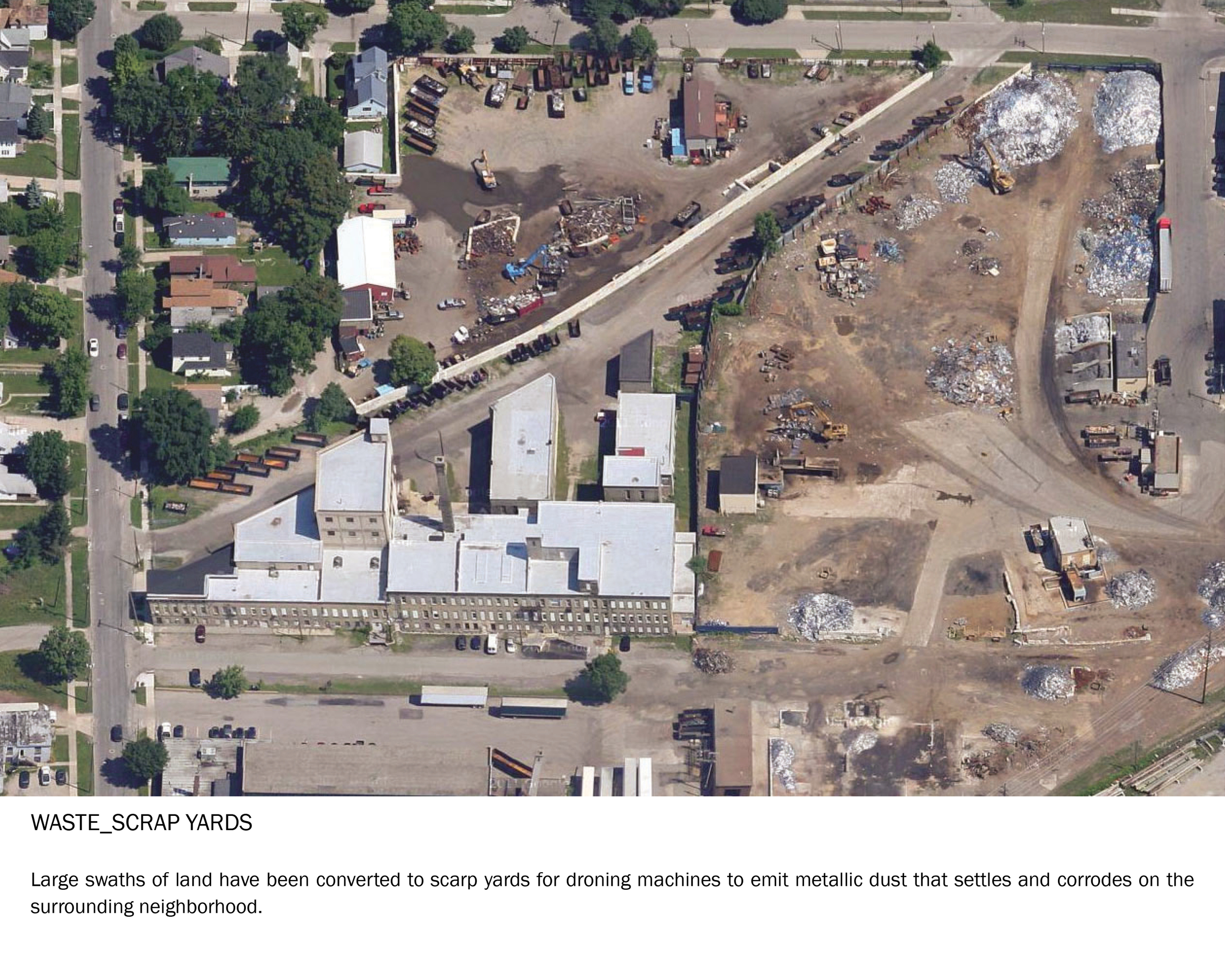
















Urban Externalities are the territories comprimized by all the elements that make up urban life. A simple example of this are the vast polluted tar sands in norther Canada as externalized landscape that makes modern life possible.
Creative destruction is the act that keeps the economy growing and is the constant flow of new goods and the discarding of old. What happens when urban fabric is discarded?
To create the boomtowns of tomorrow, something has to abandoned. When this happens capital moves on and the remaining value is extracted in a slow downward spiral. As time goes on, all the capital accumulation, and the eventual extraction, is registered in the urban fabric. Enclaves of this activity are registered in our urban environment. Following an investigatory methodology, these enclaves can be identified and territories for intervention are discovered.
This image shows the flood height in Grand Rapids, MI during the largest flood event on record in the early 1900's. This enclave corresponds to a territory of immigrant housing during the industrial revolution and industrial facilities that remains to this day physically and culturally identifiable amidst the greater urban fabric of the city.

Working within the territory, areas of dross manifested as vacant lots and other abandon infrastructure. The act of erasure within urban fabric takes Lars Lerup's adjective and makes it active as a verb.

Capital accumulation occurs where there is stimulus, or stim. This process is the opposite of drossing. What intervention can occur that is neither stim or dross? Here lies the potential for non-market economies to form and proliferate.

Layering infrastructures to generate active urban relationships separate from stim or dross.

Gaps in the urban fabric are identified and a loose framework for interconnection begins to be applied to imagine how the spaces might relate in the grid

The majority of the enclave is defined by two distinct time periods of residential construction which generated two different style city blocks. The earlier time period built square blocks while the later period built longer blcoks with an ally and garages to accomodate the automobile.

Urban morphology taking root though co-opting existing infrastructures and reconditioning them registering new layers of recognizable entropic action in the fabric.